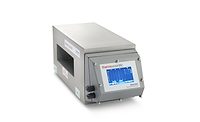New Research Supports Informative Food Labels for Improved Nut Allergy Care

Food allergies affect a significant number of children and adults globally and the incidence of peanut allergies in particular appears to be growing.*
In an effort to avoid allergic responses, parents of children with allergies, like myself, now have to rely on ambiguous food labels warning about the possible presence of the proteins causing the allergy in foodstuffs or processing facilities.
The current labels commonly seen on packaged food do not reflect the minimal amounts of exposure that those with allergies could potentially tolerate in a product without a reaction. Current labels, with statements like “may contain” or “was processed in a facility…” are generally not helpful to us and other consumers managing allergies. New studies are being done on the risk characteristics of peanut protein to learn more and communicate those gains on packaged food labels.
One of those studies was led Dr. Lynne Haber, associate professor and researcher at the University of Cincinnati, whose team evaluated how much peanut protein those with allergies can tolerate, which could lead to more informative labels. The study was supported by the Institute for the Advancement of Food and Nutrition Sciences (IAFNS), a research nonprofit uniquely positioned to mobilize industry, government, and academia to drive, fund, and lead actionable research. IAFNS elevates food safety and nutrition sciences to advance public health.
IAFNS supported this peer-reviewed study as it is among the first of its kind to carefully estimate doses of tolerable amounts of peanut protein based on clinical tests in U.S. patients. The scientists relied on established methods and research protocols conducted at multiple research sites. In these clinical challenges, patients were exposed to steadily increasing concentrations of peanut protein in a controlled clinical setting until they showed signs of an allergic reaction.
The researchers reviewed clinical trial data regarding the dose that caused a reaction. This allowed them to expand our understanding of doses that could cause a reaction in the allergic population. Their final dataset included 548 peanut protein challenges of 481 research subjects after accounting for responses to placebo protein. The scientists examined individual differences in response to allergens as well as differences across studies. Understanding individual differences in response is particularly important for establishing safe limits.
Food allergens may be present in a food due to intentional inclusion as part of a recipe, or may also be present due to unintentional cross contact. This can occur at any point in the supply chain due to the type of ingredients used or through the use of shared equipment and processes during manufacture. The identification of allergy doses that do not present an appreciable health risk is a powerful tool that enables manufacturers, regulators and advocates to base management recommendations on actual risks.
The University of Cincinnati-led team used a modeling approach that drew on clinical data collected by other teams. Scientists use these models to estimate what’s called an “eliciting dose” (or ED) to set safe limits on allergens.
For example, the ED01 would elicit an allergic response in 1 percent of the sensitive individuals tested and was calculated to be 0.052 milligrams of peanut protein. The ED05 would cause reactions in 5 percent of those tested and was calculated to be 0.49 milligrams peanut protein.
Australian and New Zealand teams as well as some in the U.S. also developed ED01 and ED05 figures for peanut protein. For comparison, the VITAL (Voluntary Incidental Trace Allergen Labelling) team from those two countries determined an ED01 of 0.1 milligrams and an ED05 of 2.1 milligrams peanut protein. These were based on thresholds for 1306 test subjects.** Another team estimated an ED05 of 0.49 milligrams protein that was calculated based on cumulative dose.*** Considered together, these data can be reviewed by responsible government, industry, and academic scientists to promote allergen management with more informative labels.
This new study has furthered our understanding of the risks faced by allergic individuals when they inadvertently consume peanut through contamination of processing facilities or other routes of exposure. Both Dr. Haber’s paper and similar studies will promote development of meaningful precautionary allergen labels. It will also facilitate risk assessments for incidents with unplanned exposure to small amounts of peanut protein.
Developing science-based, informative labels for nut allergens has implications for food manufacturers and processors, consumers, government regulators, and consumers seeking to enhance management of food allergies. The results will support the development of harmonized approaches to more informative labels on packaged foods. This new information communicates more to consumers, parents like myself, and others who care about this serious condition.
* The U.S. Centers for Disease Control & Prevention reports that the prevalence of food allergy in children increased by 50 percent between 1997 and 2011. Between 1997 and 2008, the prevalence of peanut and tree nut allergy appears to have more than tripled in U.S. children. There is no one answer to the increase of food allergies in children. Scientific studies on food allergies continue to be conducted in Canada and the U.S.
** Allergen Bureau, 2019
Looking for a reprint of this article?
From high-res PDFs to custom plaques, order your copy today!








